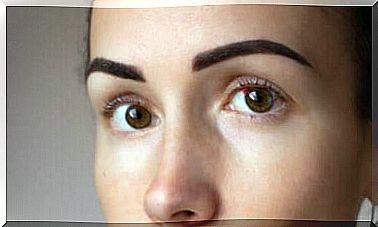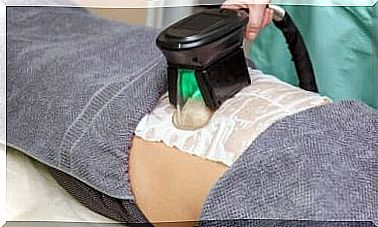Allergy To Mites: Avoid It With 4 Precautions

Those suffering from mite allergy must pay close attention to cleaning the rooms and other daily habits. While it is impossible to have a completely mite-free home, you can certainly improve the situation by following a few steps.
Mites live on carpets, bedding, upholstery, curtains, etc. Anyone with a mite allergy knows how annoying symptoms, such as a runny nose and sneezing, can be.
The problem of mite allergy

Allergies to various substances present in the environment are increasingly widespread. Symptoms typically are rhinitis, conjunctivitis, asthma and dermatitis. The wide variety of mites and allergens contribute to the diagnosis and treatment of these conditions.
Dust mites are very different from each other and cause allergies in over 10% of the population. Treatment can be quite expensive and must take some time before the symptoms can be relieved. In some cases the same treatment can cause undesirable effects.
Symptoms of mite allergy
The allergy to mites announces itself with a series of symptoms; the most common are sneezing and a runny or stuffy nose . It can also involve the eyes, with itchy, watery eyes and swollen eyelids, as well as causing coughing and difficulty breathing.
Symptoms can worsen at certain times of the day, such as at night and in the morning as these are the two times we come into contact with mites most. At times of greatest intensity, the allergy can also cause fatigue and weakness.
4 steps to prevent allergy to mites
1. The bedroom, the place where mites are most concentrated

As anticipated, completely eliminating the mites is impossible. However, we can reduce the opportunities for contact since we know where they are most concentrated.
First, therefore, we must take care of the bedroom. In this room we can clean the floor with a mop or a damp cloth and use an anti-mite mattress. We will also have to avoid all materials that attract them such as upholstered furniture or curtains.
2. Washing of fabrics
It is essential to regularly wash the sheets, curtains or any other fabric we come into contact with. In selecting the washing program, always we will set a temperature higher than 60 ° C.
If the type of fabric does not allow hot washing, we can first put it in the dryer at 60 ° C for at least 15 minutes. Then you can proceed with washing as usual.
3. The vacuum cleaner is essential

The vacuum cleaner is an irreplaceable household appliance. Those who suffer from mite allergy must avoid furnishing the house with upholstery or staying in the environments where the mites are most concentrated. If you can’t help it, you need to vacuum regularly.
But even this way, the mites won’t completely disappear. For this it is good to equip the vacuum cleaner with a high efficiency particulate air filter (HEPA) or a double layer microfilter. This will reduce the emission of dust.
4. Anti-mite essential oils
We can complete the anti-mite operation with essential oils. Some can help us eliminate mites more easily, while leaving a pleasant aroma in the rooms. Among the essential oils that we can use to combat allergy to mites we find:
- Cloves.
- Rosemary.
- Eucalyptus.
- Fennel.
Since the use of a humidifier is not recommended, you can dilute essential oils in alcohol and spray surfaces before vacuuming. Alternatively, you can add a few drops to the fabric softener for the washing machine.
Follow these tips to prevent or reduce the symptoms of mite allergy, which you have to live with all year round unlike seasonal allergies such as hay fever.









